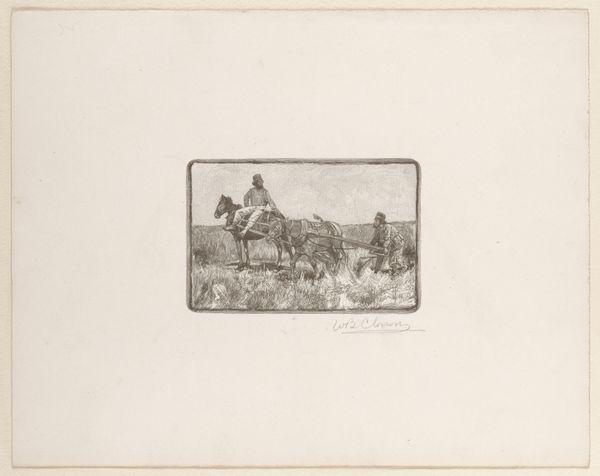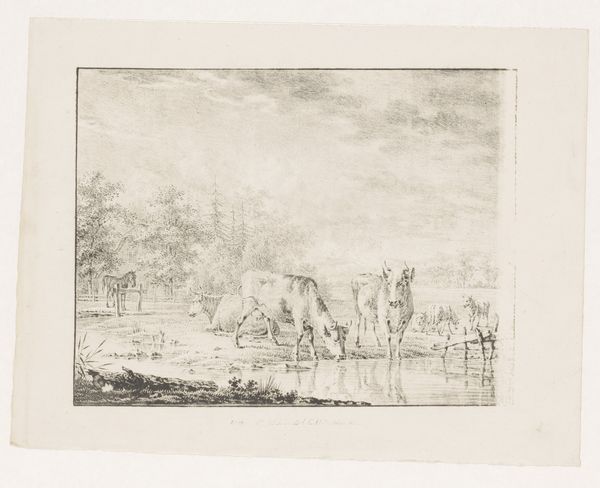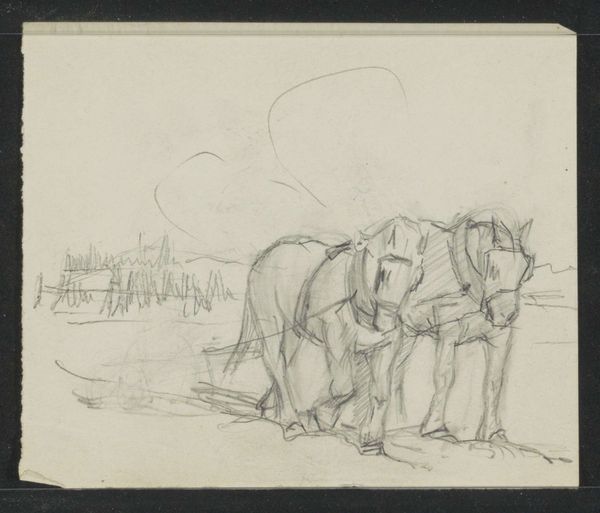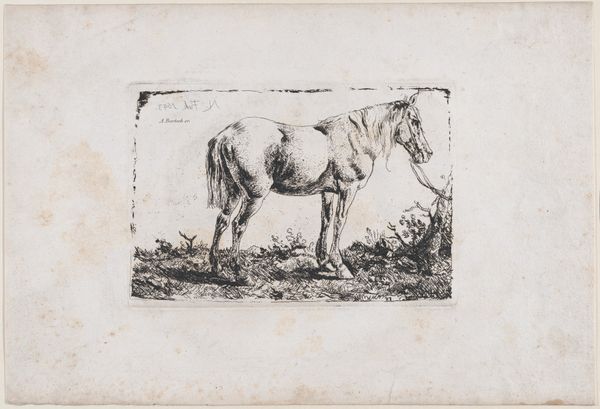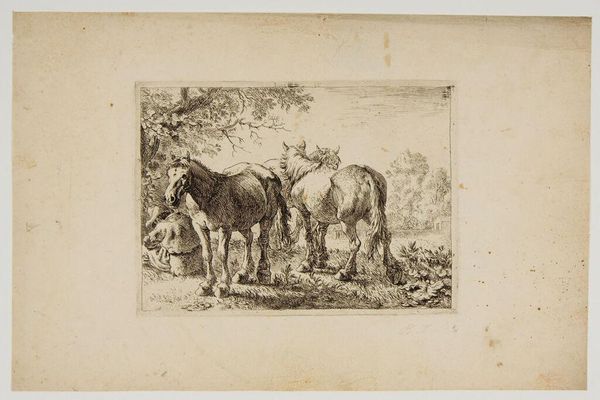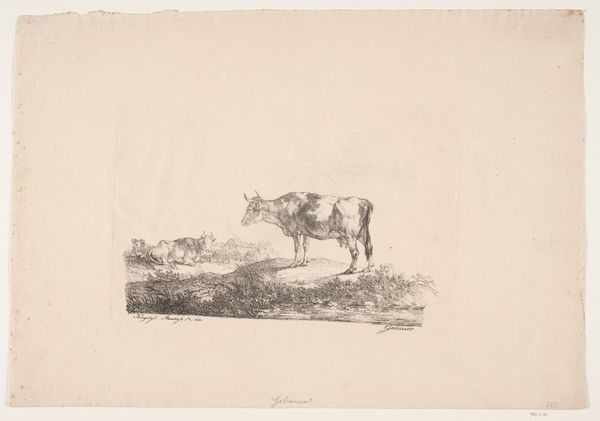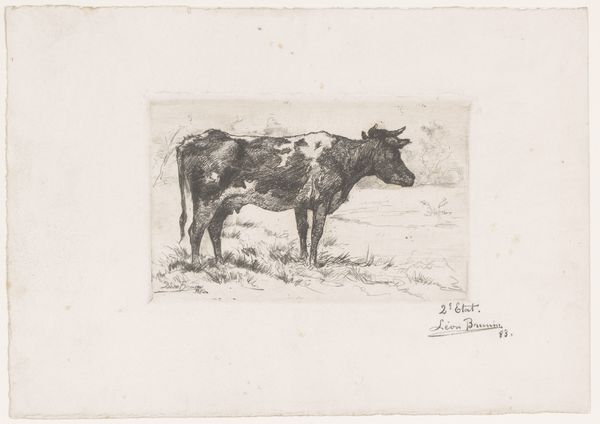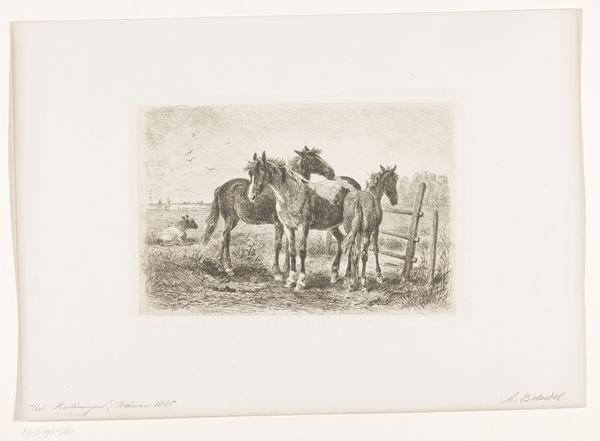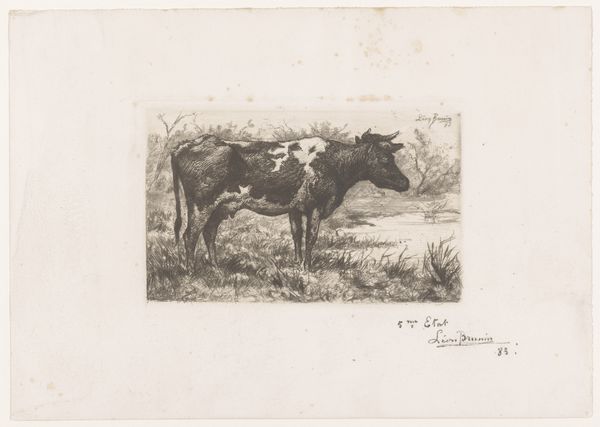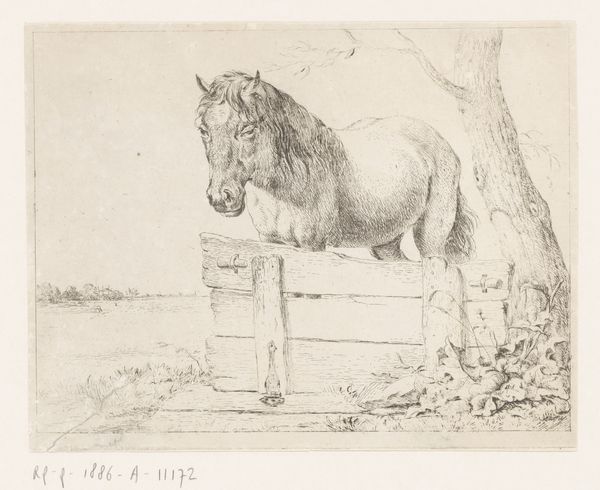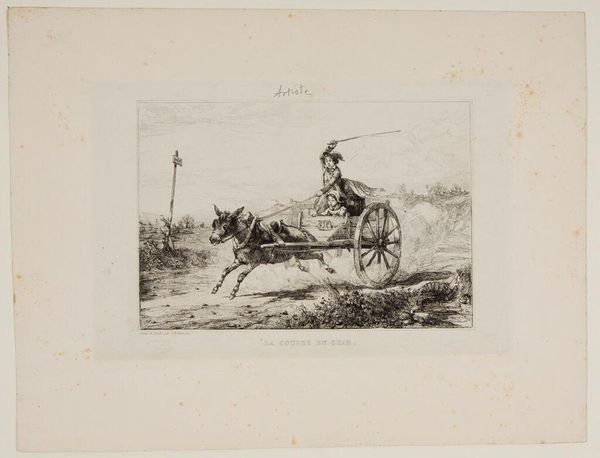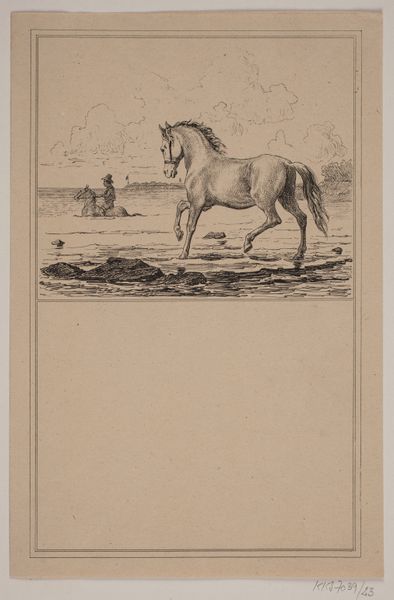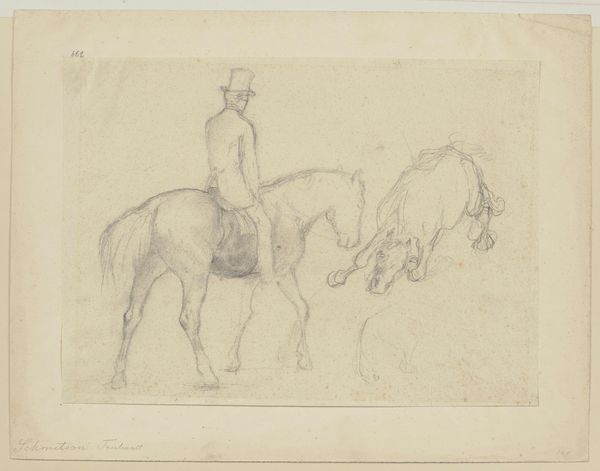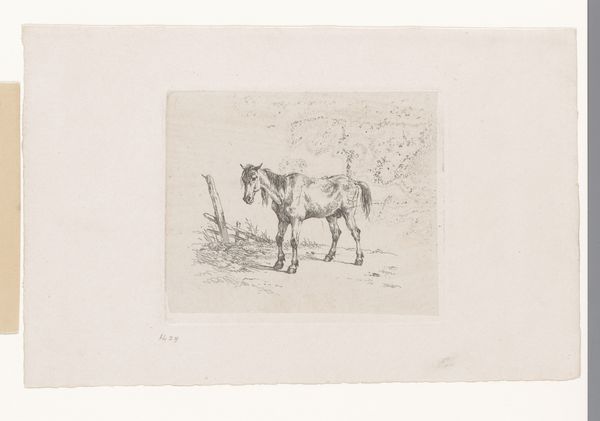
drawing, pencil
#
drawing
#
landscape
#
figuration
#
pencil
#
horse
#
pencil art
#
realism
Copyright: Rijks Museum: Open Domain
Curator: Welcome to the Rijksmuseum. We are now looking at "Staand Paard," a pencil drawing by Maria Vos, created in 1886. It portrays a standing horse. Editor: It has an ethereal quality, a quiet stillness. The horse seems weighted, but not only by gravity—by thought, maybe? A creature captured in a reflective pause. Curator: It’s interesting that you perceive it as "ethereal." Considering the drawing medium, and also how realism attempts to portray life as is, perhaps Vos was interested in representing the realities of labor, and its effect even on these animals, beyond the aesthetic qualities. Editor: I agree, there’s that sense of labor etched into its very posture. You can feel the weight of its burden. Yet, simultaneously, the wisps of pencil create this incredibly soft rendering of this animal, and that evokes a quiet sense of being. Was pencil a common medium at this time? Curator: Yes, and more often used for sketching. Here, though, Vos uses the graphite not just to render form, but also to articulate subtle shifts in texture and weight. By depicting it on this common material, in this pose, she asks viewers to consider the horse as not only something beautiful, but also something with which ordinary people would share a life and landscape. Editor: Yes! And it really works with the almost casual arrangement of studies layered within this drawing as if pulled directly from the artist’s sketchbook, which removes any pretense, right? We are given a view of everyday life, captured simply, almost urgently. Curator: Indeed. This sketch brings up an important question: how are the materials we choose implicated in how the subjects are represented and seen by the world? In using pencil, a common and readily available tool, the artist is already setting the stage for the everyday. Editor: The fact that we can study a working drawing from all that time ago is deeply humbling. The level of dedication Vos brings, even in what could be seen as preparatory work, is truly something. Curator: Absolutely. Thinking about the means of production changes how we perceive this. It is no longer merely an image of a horse, but rather a record of labor, technique, and social life that existed in Amsterdam around the late 19th century. Thank you for your impressions.
Comments
No comments
Be the first to comment and join the conversation on the ultimate creative platform.
